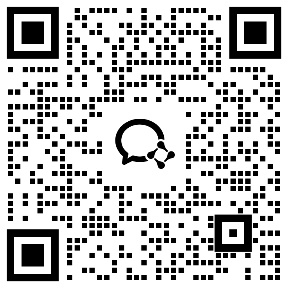定语从句并列句例句
两个或两个以上的简单句用并列连词连在一起构成的句子叫做并列句,那么并列句是怎么用的呢?以下是由小编整理关于定语从句并列句例句,希望大家喜欢!
一、定语从句基本概念:
在复合句中,修饰某一名词或代词的从句叫定语从句。如:
Do you know the man who spoke at the meeting just now?
That is the house where he lived ten years ago.
定语从句所修饰的词叫先行词;定语从句一般用关系代词或关系副词来引导,关系词放在先行词与定语从句之间起连接作用,同时又作从句中的一个成分。
引导定语从句的关系代词有:that, who, whom, whose, which;
关系副词有:when, where, why.
二、定语从句关系词的用法:
(一)关系代词的用法:
1. 作主语用who, which和that, 如:
He is the man who/that lives next door.
The train which/that has just left is for Shenzhen.
2. 作宾语用whom, who, which, that, 如:
The man (whom/who/that) we have just seen is a famous writer.
Where is the book (which/that) I bought last week?
注:在非正式文体中,用于指人的关系代词who whom, that 通常可以省略,但在正式文体中通常用whom, 不可省略;用于指物的关系代词which和that 在非正式文体中也通常省略,但在正式文体中一般不省略。
3. 作定语用whose, 如:
(a) He is the man whose car was stolen last week.
(b) It was a meeting whose importance I did not realize at that time.
注:“whose +名词中心词”这一结构在定语从句中既能作主语(如上a句),又能作宾语(如上b句)。whose 的先行词常用来指人,但有时也可以用来指具体事物或抽象概念,这时可以与of which 结构互换,词序是:“名词+of which”,如:
They came to a house whose back wall had broken down.. (= the back wall of which)
He’s written a book the name of which I’ve completely forgotten. (= whose name)
4. 作表语只用that ,它既可以指人,也可以指物,但时常省略。如:
He is no longer the man that he used to be.
This is no longer the dirty place (that) it used to be.
(二)关系副词的用法:
1.when 指时间,在从句中作时间状语,它的先行词通常有:time, day, morning, night, week, year 等。如:
I still remember the time when I first became a college student.
Do you know the date when Lincoln was born?
注:when时常可以省略,特别是在某些句型和某些时间状语中。如:
Each time he came, he did his best to help us.
But help never stopped coming from the day she fell ill.
2.where指地点,在从句中作地点状语。它的先行词通常有:place, spot, street, house, room,
city, town, country等,如:
This is the hotel where they are staying.
I forget the house where the Smiths lived.
注:where有时也可以省略。如:
This is the place (where) we met yesterday.
3. why指原因或理由,它的先行词只有reason。如:
That is the reason why he is leaving so soon.
注:why时常也可以省略。如:
That is the real reason he did it.
(三) 使用关系副词应注意下列几点:
1. 这三个关系副词在意义上都相当于一定的介词+which结构:
when = on (in, at, during…) + which;
where = in (at, on…) + which;
why = for which. 如:
I was in Beijing on the day when (=on which) he arrived.
The office where (=in which) he works is on the third floor.
This is the chief reason why (=for which) we did it.
2. 当先行词是表时间的time, day等和表地点的place, house等时,一定要注意分析从句的'结构,如果缺少主语或宾语时,关系词应该用which或that, 缺少时间状语或地点状语时,才能用when或where,试比较:
I’ll never forget the day when my hometown was liberated.
I’ll never forget the days which/that we spent together last summer.
His father works in a factory where radio parts are made.
His father works in a factory which/that makes radio parts.
3. when和where既可以引导限制性定语从句,也可以引导非限制性定语从句。而why 只能引导限制性定语从句。
三、并列句的用法
基本结构是“简单句+并列连词+简单句”。并列连词有:and, but, or, so等。并列句是由两个或两个以上的简单句连接而成。并列句中的各简单句意义同等重要,相互之间没有从属关系,是平行并列的关系。它们之间用连词连结。
如:
I like thrillers and I like action movies,too.
I like action movies but I don't like thrillers.
Hurry up or you'll be late.
and, or和but都是连词,在句中连接两个或两个以上的并列成分。可连接两个词,两个短语,两个分句,但所连接的两个成分必须一致,绝不能一个是词,一个是句子。如:
I like red and orange.
He isn't my brother or my friend.
I like playing football and swimming.
and 的意思是“和”,表示前后两个成分的并列或对称关系;or的意思是“或者”、“否则”、 “要不然”,表示两个成分并列或选择关系;but 的意思是“但是”,表示两个成分之间的转折关系。
总结
and 表示顺承
while表示对比
but/yet表示转折
for/so表示因果
or/either ...or 表示选择
when和and/then表示时间
and/so/neither/nor表示并列
not only...but also/neither... nor表示递进
四、并列句的用例分析
对付并列句及并列复合句的方法是各个击破。先抓住并列连词and 或but,识别出是并列句后,分别理解并列连词前后的句子。
Noise generated by traffic on arterial roads and freeways is an increasing problem in australia and there is growing concern among highways authorities in australia about thelimitations of some types of noise barriers which have been installed in this country.
翻译:在澳大利亚,由主干道和快车道的交通所产生的噪音是一个日益严重的问题。而且澳大利亚的高速公路主管部门也越来越关注已经安装在这个国家的一些噪音屏障的局限性。
结构分析:一个典型的并列复合句,并列连词and 连接两个句子,前一个句子是一个简单句,主语是noise;generated by traffic on arterial roads and freeways 是过去分词短语做noise 的后置定语,后面的句子中有一个which 引导的定语从句。
However, low barriers are not effective and high timber barriers have become much more expensive.
翻译:然而,矮屏障无效,高屏障更昂贵。
结构分析:一般的并列句,and 连接两个简单句。
Furthermore,fanwall is maintenance free and it is not susceptible to damage by fire and vandalism.
翻译:而且,fanwall 是不需要维护的,而且它不易受到火灾和蓄意破坏。
结构分析:这是一般的并列句,and 连接两个简单句。vandalism 是一个生词,但由于和fire 一起,fir and vandalism,所以应能猜出和火灾一样不好的东东,实际在考试中能理解成这样就可以了。
The parental role is central to the stress-related anxiety reported by employed mothers,and a major contributor tosuch stress is their taking a greater role in child care.
翻译:工作母亲有和压力相关的焦虑,这种压力的主要原因是她们在照顾孩子反面起到更大的作用。
结构分析:是一个并列句,and 前后的句子都是一个简单句。
Government have encouraged waste paper collection and sorting schemes and at the same time ,the paper industry has responded by developing new recycling technologies that have paved the way for even greater utilization of used fibre.
翻译:政府已经鼓励废纸回收和分类系统,而且,同时,造纸工业也通过开发新的回收技术做出了反应,这个回收技术为更大程度地利用使用过的纸铺平了道路。
结构分析:是并列句,前后都是一个简单句,后面的句子中有一个that 引导的定语从句做new recycling technologies 的定语,by 是介词,表示“通过……方式”的意思,后面常接动名词。
Already,waste paper constitutes 70% of paper used for packaging , and advances in the technology required toremove ink from the paper have allowed a higher recycled content in newsprint and writing paper.
翻译:废纸组成了用包装的纸张的70%。而且从纸张中去掉墨水的技术进步已经充许了在新闻纸和书写用纸上的更高的回收满意度。
结构分析:是并列,and 前后都是一个简单句,但都不简单。and 前面的简单句的谓语是constitutes,而不是used for,used for 是过去分词短语做 paper 的后置定语, and 后面的句子的主语是 advances,谓语动词 have allowed,required to remove ink from the paper 不是谓语,而是过去分词短语做technology 的后置定语。
【定语从句并列句例句】相关文章:
定语从句例句 that07-18
定语从句that的例句07-18
that的定语从句例句07-20
定语从句的例句01-20
that定语从句例句12-10
as定语从句例句07-16
定语从句的经典例句07-17
定语从句经典例句07-17
定语从句例句01-22






